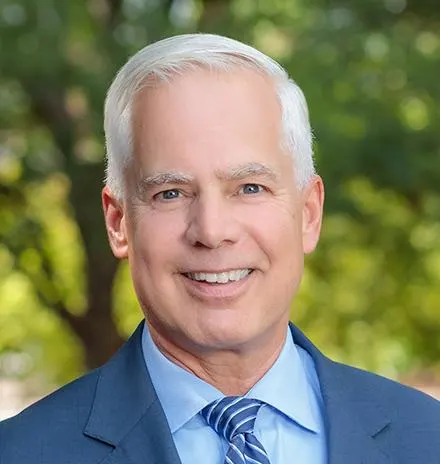Who achieves success and power in the United States? In the twentieth century, the easiest path to power was available to certain individuals—mainly men, mainly white—who were otherwise favored with the right religious, family, geographic, and educational ties. But a significant number of "outsiders," such as Elizabeth Arden, created their own road to success, overcoming significant odds.
The new book Paths to Power: How Insiders and Outsiders Shaped American Business Leadership explores the demographics of leadership in the U.S. over time and offers lessons for the next generations. What doors are opening? Which remain closed?
The book, written by Harvard Business School's Anthony J. Mayo and Nitin Nohria, and Boston College's Laura G. Singleton, is the second in a trilogy on leadership and leaders from the HBS Leadership Initiative.
In this Q&A, Mayo discusses what their research tells us about who makes it to the top of the American business ladder, how access to power appears to be widening today, and how the face of leadership might change in the future.
Sean Silverthorne: Your research suggests that for the first three quarters of the past century, the Horatio Alger stories had it wrong—access to positions of power and leadership in America was not available to all equally. Who was favored during that time?
Anthony Mayo: It's not that the Alger stories were wrong, it's just that the focus has always been on the individual who overcomes seemingly intractable obstacles to achieve great success.
What is often overlooked or forgotten in the Alger stories is that the individuals who "came up from their bootstraps" did so with the assistance of an important and influential benefactor. Yes, they often possessed incredible perseverance and determination, but the benefactor helped to channel that energy into an opportunity with potential. In a sense, this personal network or connection helped to facilitate access to others in positions of influence which in turn provided opportunities for advancement. In the early decades of the twentieth century, social networks played a significant role in who had access to power in business. Social networks were defined by who you were (your race and gender), where you were born, what religion you practiced, and how wealthy you were.
In almost all cultures, there is a pervasive sense that some individuals have won the "ovarian lottery." These winners or insiders have the right parents, obtain the right education, have the right skin color, are the right gender, and belong to the right institutions. Doors open. Opportunities emerge. Success seems predestined. While there are no real guarantees, being born as an insider increases the odds and likelihood of success.
Conversely, those who did not win the "lottery" are often outsiders looking in. They have the wrong parents, the wrong skin color, the wrong nationality, the wrong birthplace, and the wrong gender. They don't belong to the right organizations. Doors do not open. Opportunities are beyond their grasp. The number of people who actually surmount the odds is so low that it is little wonder that their achievements and successes (e.g., Horatio Alger) are celebrated.
Wealthy, white, Protestant (especially Episcopalian or Presbyterian) men from the industrialized centers of the Northeast had the greatest advantages and opportunities for reaching the pinnacle of success in business in the early decades of the twentieth century. Being the "right" type of person in a thriving economic hub opened many doors. During this time, education as a prerequisite for success in business was more ornamental than practical. Education generally further showcased one's social standing, especially for those attending prestigious institutions. Education was not considered essential for success in business until the middle decades of the twentieth century.
In Paths to Power, we trace seven factors that either provided easy access to an insider track to power or functioned as obstacles to success. These include birthplace, nationality, religion, education, social class, gender, and race. Those from privileged families have always had an easier path to traditional power. Those on the outside—foreigners, women, African-Americans, non-Protestant religious affiliations—often pursued other paths to power. When doors were closed, outsiders created their own paths. Sometimes that path meant relocating to a new part of the country where opportunity and access were more open. Sometimes that path involved significant education—in essence, building social mobility through professional credentials. Sometimes the path involved entrepreneurship. With access to traditional opportunities blocked, founding a company to serve an affinity constituency was often the only choice for success in business.
Q: How has that situation changed today? Do paths to power mirror trends and values in society at large?
A: There are still inside and outside paths to power in business; however, there has been a gradual opening of access. The most significant contributor to an opening of access has been education. The impact of the GI Bill after World War II was important in providing education to a new generation of leaders. The GI Bill put education within reach for individuals from all socio-economic backgrounds. In turn, that education helped to facilitate new social networks—the opportunity to associate with individuals of influence and access to new career prospects. The Civil Rights and Affirmative Action legislation of the 1960s and the Title IX provision of the 1970s Education Amendment provided similar opportunities for women and minorities.
While there are no real guarantees, being born as an insider increases the odds and likelihood of success.
In our research, we saw education supplanting religion, birthplace, and nationality as a more important factor for success by the late 1950s. Education was often a key lever in compensating for an outsider status. As part of the professional credential process discussed previously, many of the outsiders in our research were far more educated than insiders.
The MBA as a prerequisite for success in the top tiers of business became increasingly important from the 1970s through the end of the century, and as a result, we have seen a massive proliferation of MBA programs. Despite the significant leveling of undergraduate education, the proliferation of the MBA has, in some ways, functioned as another test for outsiders. MBAs from elite institutions have far greater access to opportunities. But, who has access to these elite programs? Are they simply part of a long feeder system for the privileged class that starts in private nursery schools? Are they truly open to all?
Education has thus had a paradoxical impact on access—at the undergraduate level, more access and more opportunity. At the elite graduate institutions, there may be less access—in essence, a closing of the funnel.
Q: In what areas do paths to power still appear to be closed today? Who is being excluded?
A: The three areas that are still part of the outsider path are social class, gender, and race. There has been some progress, but there is still a long way to go. Less than 5 percent of the Fortune 500 companies are headed by a woman or non-white man. We expect that to change in some significant ways as the population who has benefited from the legislative actions of the '60s and '70s are coming into positions of power. Women now represent 40 percent of MBA degree recipients, which should impact the composition of the most senior business leadership positions.
A diverse perspective at the top may be a key to unleashing talent and fresh opportunities throughout the firm.
The most intractable issue is probably social class. The composition of leaders who overcame poverty to achieve the pinnacle of success in business changed very little over the course of the twentieth century. While the GI Bill helped to level educational opportunities, the systemic issues of poverty often prevented many from taking advantage of that opportunity. As society becomes more and more polarized, it will be increasingly difficult for those from the lower socio-economic class to achieve parity. Some elite institutions are now beginning to do more outreach, but this area has seen the least progress and the least visibility in society and legislation.
Q: What does your research suggest about American business leadership in the future?
A: Businesses that will succeed in the twenty-first century will be those that embrace the diversity of their workforce, that can compete in a global, competitive landscape, and that can differentiate their products and services for a more discriminating customer base. The changes in the social context of business will require leaders (both men and women) who have a global perspective and who can harness talent and sustain innovation.
The factors that paved the inside path to success in the twentieth century have shifted—education is far more important today. Going forward, a global perspective will be increasingly vital. Managing this level of complexity requires a broader view—one that is not restricted to a single gender, race, or nationality. In fact, a diverse perspective at the top may be a key to unleashing talent and fresh opportunities throughout the firm.
Q: What is the relationship between business leadership and power that the title of your book suggests?
A: Paths to Power is the first book in over fifty years to comprehensively analyze the demographics of leadership and access in business in the United States. The last comprehensive studies were published in 1955: (1) Mabel Newcomer's The Big Business Executive, the Factors that Made Him, 1900-1950 (Columbia University Press), and (2) W. Lloyd Warner and James C. Abegglen's Big Business Leaders in America (Harper and Brothers).
One of the reasons that big business executives were studied fifty years ago and are increasingly analyzed today is simply based on the impact that business has on our lives. Business pervades all aspects of society from what we do to what we use to how we spend our time.
Q: What do you think is the single most important finding from the research that went into the book?
A: At first glance, the composition of CEOs in America seems to have changed little in 100 years—it's mostly comprised of white men. But digging deeper, it is apparent that the composition has changed in some dramatic ways. There are more foreign-born CEOs today, religion is no longer a barrier to entrance, education has helped to level the playing field for some from less advantaged backgrounds, etc. Our research traces who has had access to elite business opportunities, what important factors influenced access, and what obstacles still remain.
Q: What are you working on now?
A: The HBS Leadership Initiative's Great American Business Leaders Database was the foundation for Paths to Power and its precursor work, In Their Time: The Greatest Business Leaders of the 20th Century. The third book in this trilogy of research based on the database is tentatively called Soaring Hubris. In this book, Nitin Nohria, Mark Rennella, and I take our previous study of context and apply it to one industry. In this case, we're taking a deeper dive into the airline industry, looking at how its leadership changed during the course of the twentieth century and how contextual intelligence or lack thereof influenced industry evolution. We are particularly interested in the co-evolution of industry structures and leadership approaches.


